In Your Eyes – Interview with Joseph Priniotakis – Alaska 2023
23rd August 2023
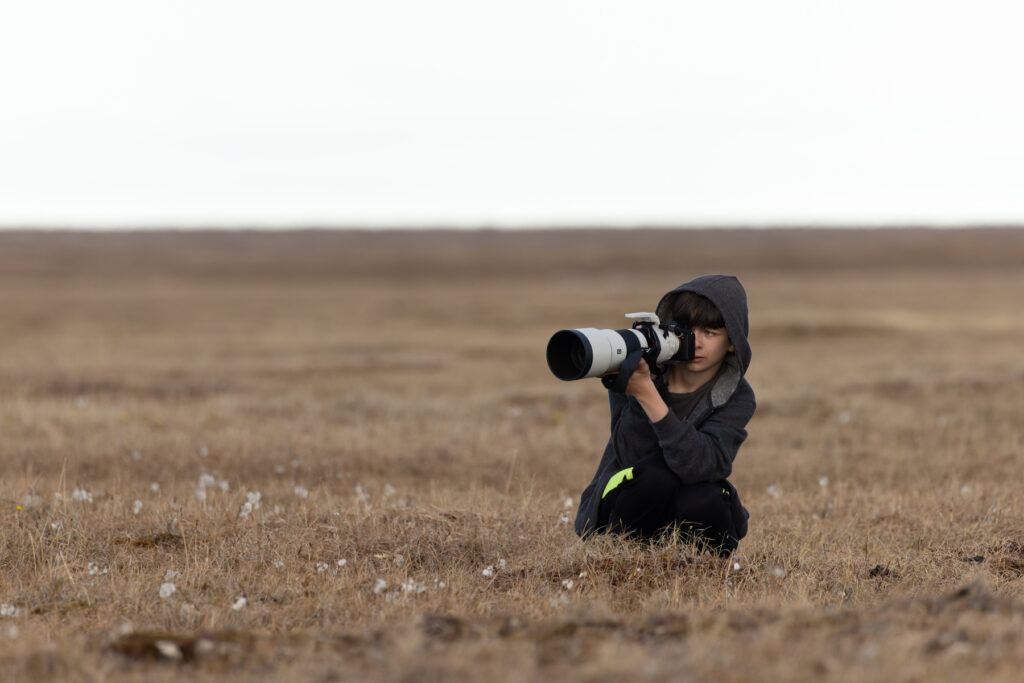
Joseph in action during our Wild Images Alaska tour 2023 (image by Mike Watson)
Before we get started, we should mention that, although his photos speak for themselves, you will probably be surprised to learn that Joseph is only 13 years old! As well as being the most talented young bird photographer we have met so far, he is also by some way the youngest we had on tour. Under the watchful eye of his dad, Manolis, Joseph impressed us with his maturity and skills on our recent Wild Alaska tour. We hope you enjoy his images.
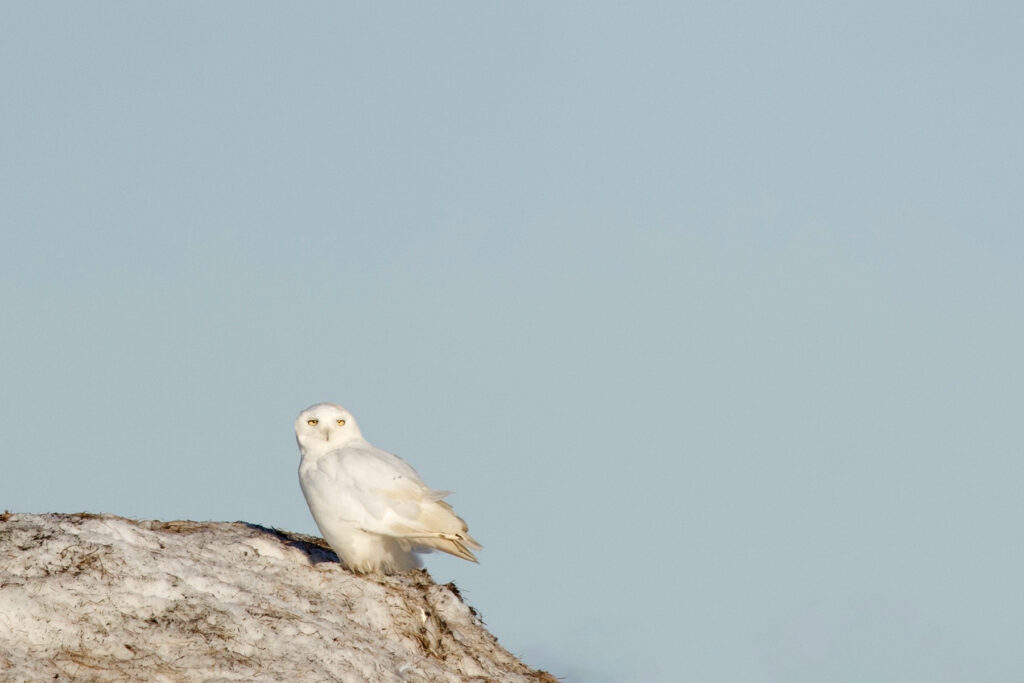
Snowy Owl, Utqiagvík, Alaska. Why Wild Images loves this – Male Snowy Owls are notoriously difficult to get close to, particularly in a place where the local people still hunt them for food. In fact, Utqiagvík means ‘the place where we hunt Snowy Owls’, so Joseph did well to get this close to this fabulous ivory-white beast slumbering on a snow drift (image by Joseph Priniotakis)
Tell us a little more about your photography journey. How long have you been taking photos?
I have been taking photos for about four years now. I was inspired by watching birds in the yard. I discovered there were so many types. I didn’t even know that ducks were birds! And then I saw my grandfather’s photos of red-tailed hawks, catbirds, and cottontail rabbits. He lent me a camera and I was off. I would find any bird or mammal and take a photo of it.
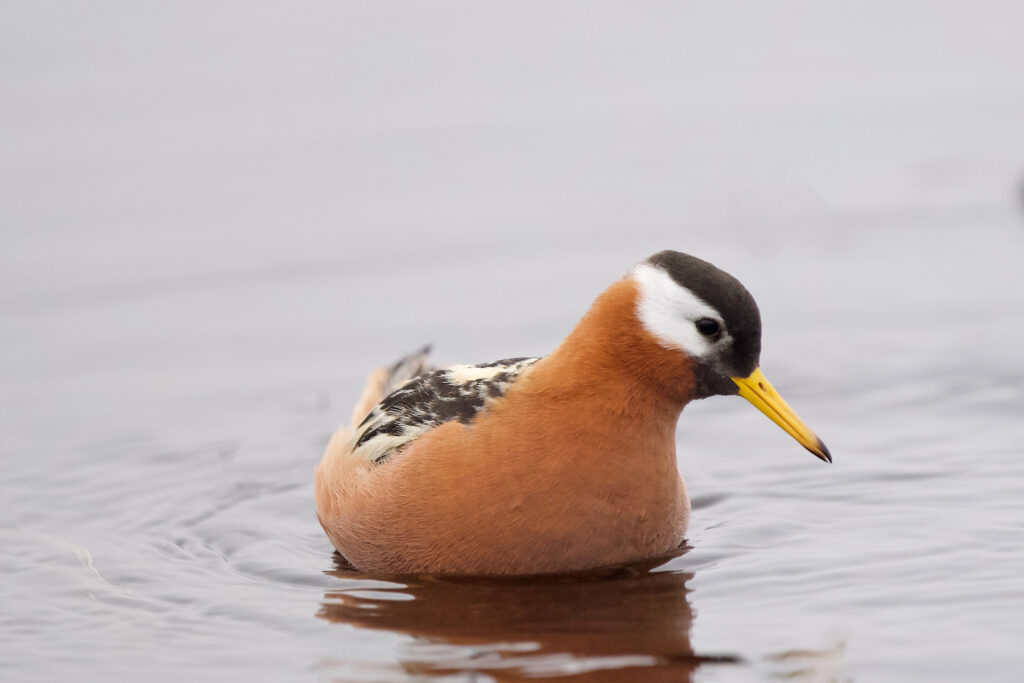
Red Phalarope, Utqiagvík, Alaska. Why Wild Images loves this – Constantly spinning and hurrying around the tiny tundra pools at the height of their courtship, it was not easy to get one without a lot vegetation in the frame but Joseph has managed it quite nicely here (image by Joseph Priniotakis)
What are you passionate about besides photography? What do you do in your free time?
I play guitar. I also like hanging out with my cat, Nick.
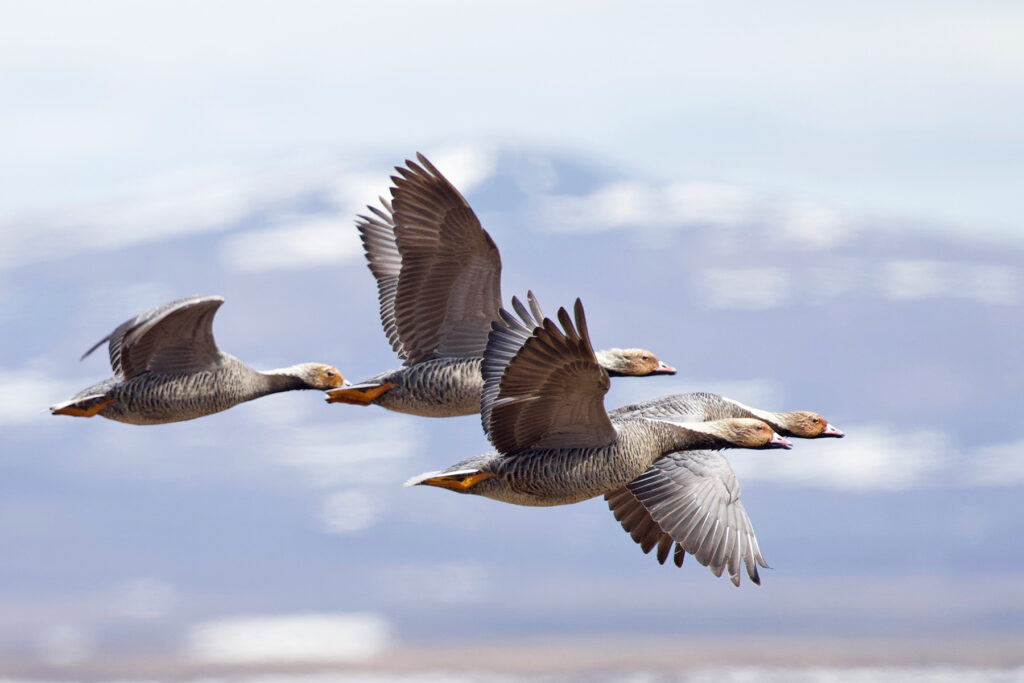
Emperor Goose at Safety Sound, Nome, Alaska. Why Wild Images loves this – This is a difficult enough bird to see in spring at Nome, let alone to photograph like this. They show a rusty tinge to their heads at this time of year, having rooted around in iron-rich waters. Joseph shows his flight shot skills again in this one (image by Joseph Priniotakis)
What drew you to visit Alaska?
The constant buzz of birders on the Internet about Alaska and their photos of King Eiders, Snowy Owls, Musk Ox, and other Arctic wildlife. Another big reason I wanted to visit Alaska was because of how different it was from my home in Washington DC.
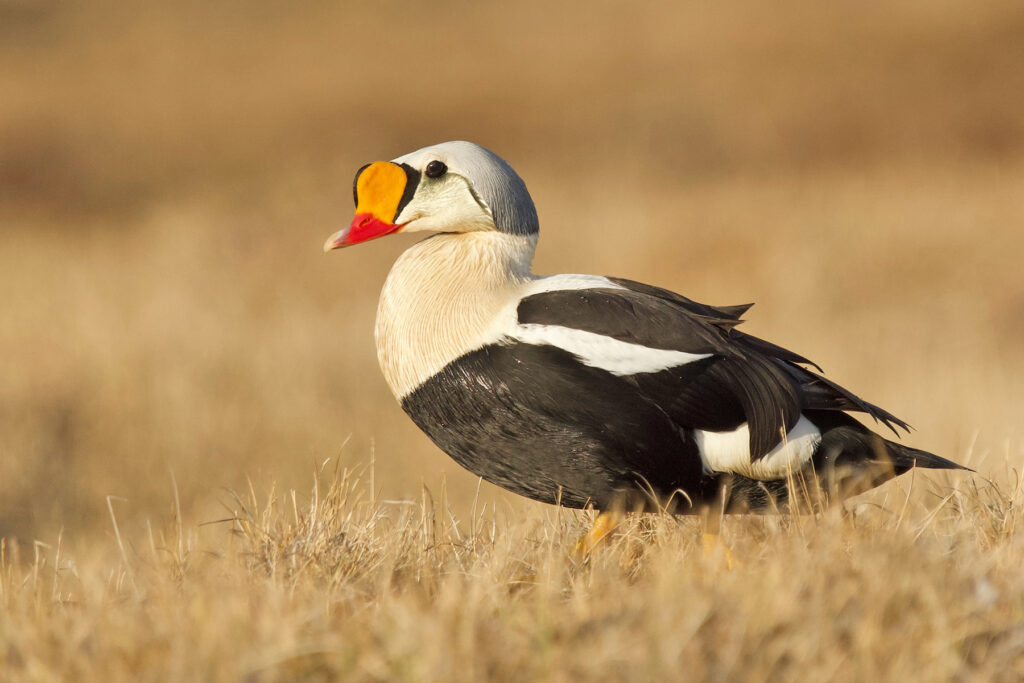
King Eider drake, Utqiagvík, Alaska. Why Wild Images loves this – A low angle sunlight image taken in the midnight sun in the High Arctic of this beauty was one of our aims on this tour and Joseph certainly achieved it. It required some patient stalking to close enough to capture this kind of detail of a truly exquisite bird (image by Joseph Priniotakis)
What camera gear did you use on your tour?
I figured most of the tour’s wildlife would be in a fairly close proximity, but just in case of a long-distance critter, I packed my 200-600mm F6.3 along with my Sony A7III.
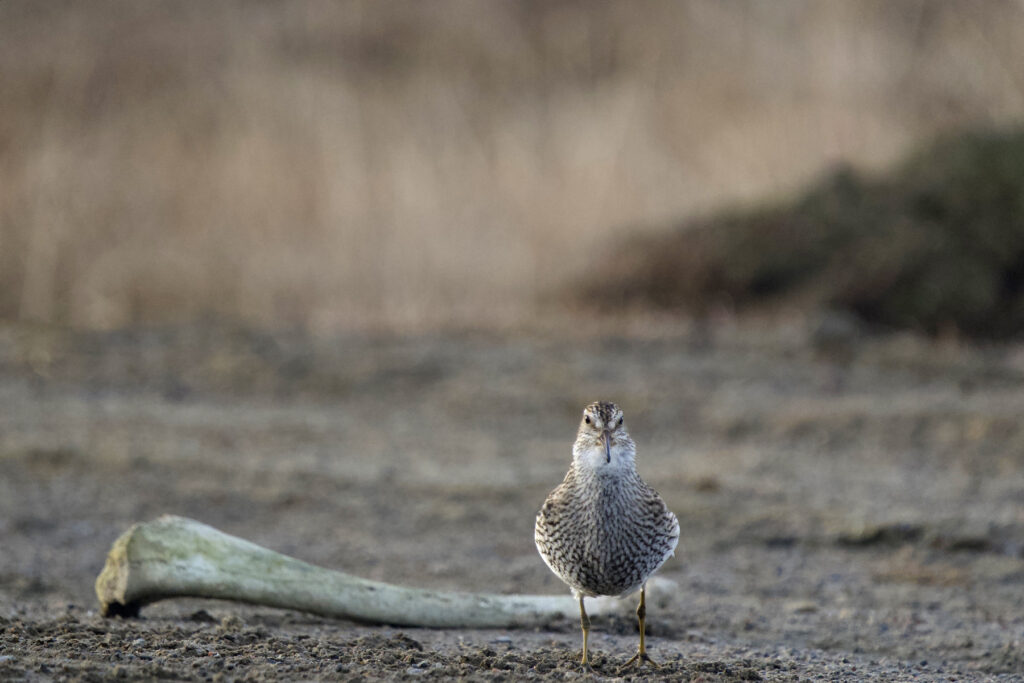
Pectoral Sandpiper, Utqiagvík, Alaska. Why Wild Images loves this – Pectoral Sandpiper is a very common breeding bird on the tundra at Utqiagvík. Instead of a standard shorebird ‘field guide’ pose Joseph captured something a little more atmospheric, with this one head-on next to a Caribou bone. (image by Joseph Priniotakis)
What were your first impressions of Alaska for photography?
Brilliant. Even flying into Anchorage, I could see how very easy it would be to incorporate the land’s stunning surroundings into each and every photograph. There were endless opportunities to photograph due to the 24-hour daylight above the Arctic Circle.
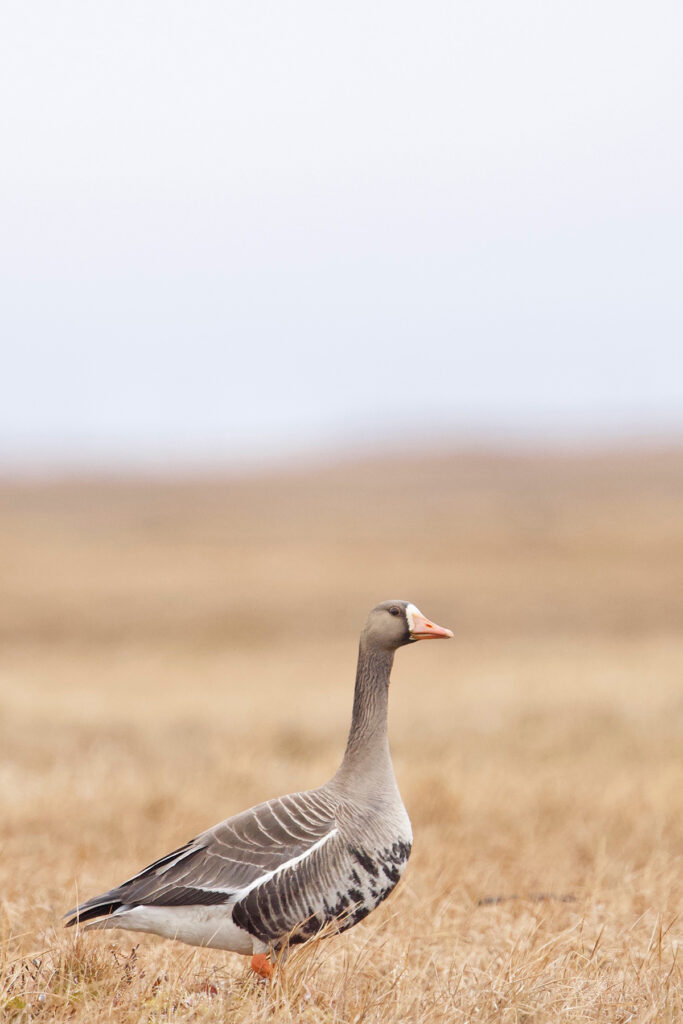
Greater White-fronted Goose, Utqiagvík. Why Wild Images loves this – this is a tricky bird to get close to as they are hunted in the Arctic, and Joseph used his fieldcraft to sneak up on it. Hunters call them Speckled Geese and we met folks collecting their eggs for food during our time at Utqiagvík (image by Joseph Priniotakis)
What surprised you about your trip there?
I was really surprised about how much each day rose above my expectations. I thought most birds would be tough to find and they only breed on “that specific ridge” or “in this undisclosed location” but pretty much everything we went looking for we found at a photographic distance. Also, the gas prices were insane!
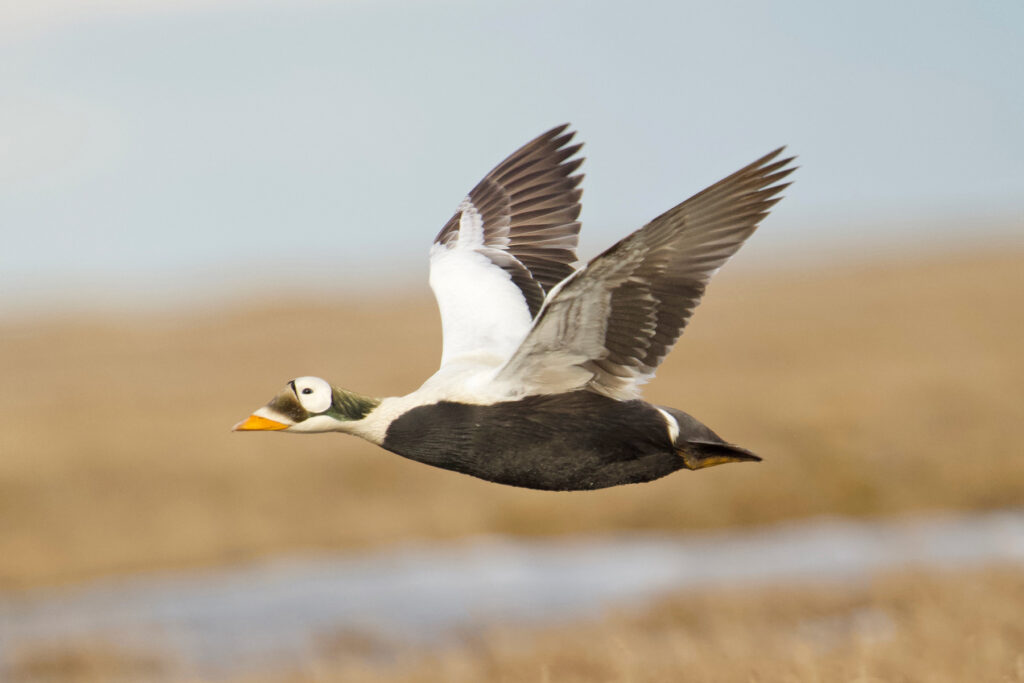
Spectacled Eider, drake, Utqiagvík, Alaska. Why Wild Images loves this – Surely the best eider! Joseph was again fast enough with his super skills and amazing Sony gear to catch this one going past us like a missile, while the Canon and Nikon autofocus systems were bouncing all over the place, failing to lock on to it (image by Joseph Priniotakis)
What were your frustrations on your trip?
An annoying part of the trip was how the whole internet crashed in Barrow and the rest of the North Slope owing to the destruction of an undersea cable off Prudhoe Bay. Everything was out, even the credit card machines, and it was days before I could call home. This is just one example of why you should prepare for the unexpected when visiting such a remote place.
Of all the birds you have photographed, do you have a favorite destination you prefer to photograph?
Nome and Utqiagvík (Barrow) were my favorite destinations. I have also been to the Jamaican Blue Mountains and enjoyed trying to track down endemic Jamaican birds.
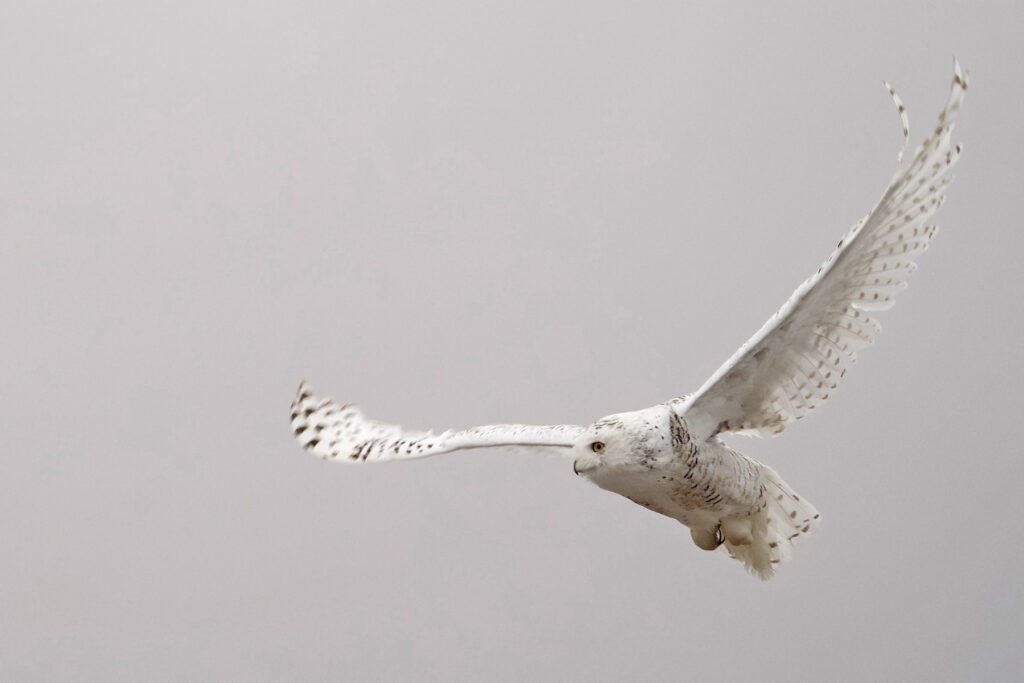
Snowy Owl in flight, Utqiagvík, Alaska. Why Wild Images loves this – again it was tricky to get close to this Snowy Owl and then be quick enough to capture the flight shot when it exploded from its post (image by Joseph Priniotakis)
Aside from the photography, what other aspects of the tour did you enjoy?
I enjoyed just experiencing the beauty of Alaska. I loved learning about the cultures and meeting the very friendly people. The desk clerk of the hotel in Utqiagvik was especially friendly.
What have you learned from your tour of Alaska?
I learned to be prepared for the unexpected!
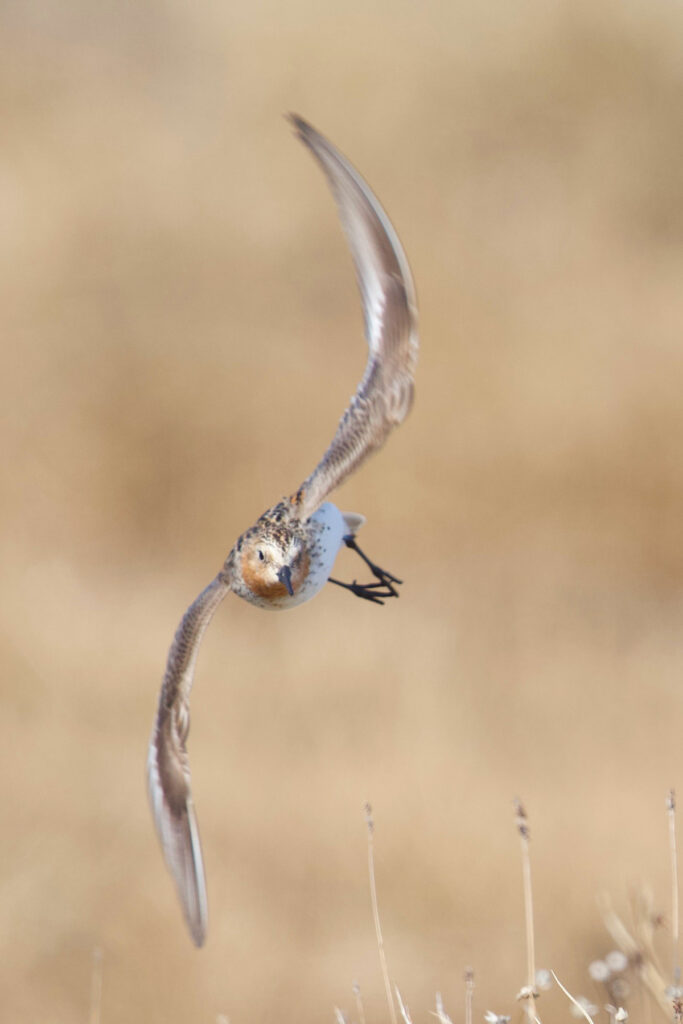
Red-necked Stint is a Siberian-breeding shorebird with an outpost on Alaska’s North Slope. Why Wild Images loves this – We love this crazy flight shot with wings shaped like rotor blades. You have to be very quick to capture a fast-flying bird head-on and Joseph showed his skills in this regard on many occasions on the tour, helped by Sony’s awesome autofocus tracking mode (image by Joseph Priniotakis)
Do you have any advice for photographers visiting Alaska?
A piece of advice I would give to a photographer visiting Alaska is to follow your guide and you will get much better photos. Also, even if you have already some good photos of one particular bird or mammal, never stop photographing it every time you see it. Bring lots of memory cards and lots of spare batteries. Be flexible and prepared for the unexpected.
Are there any images that are particularly special to you?
Yes, I have included them.
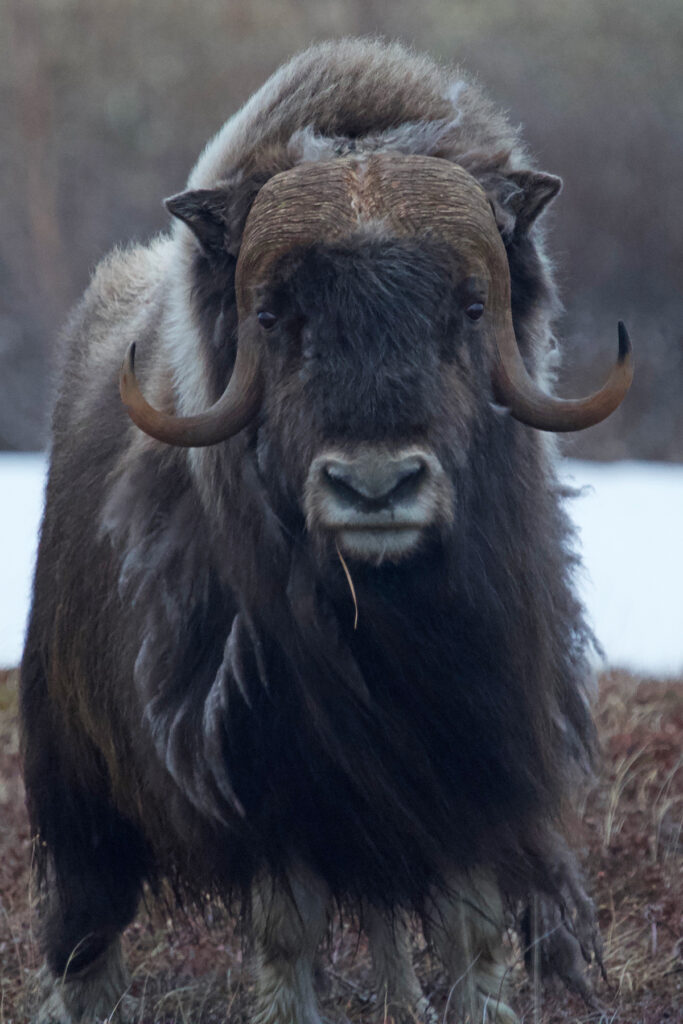
Musk Ox, Nome, Alaska. Why Wild Images loves this – Despite their benign appearance, Musk Ox can be a very dangerous animal if provoked. Fortunately, this one was quite relaxed in Joseph’s presence, enough for him to fill the frame with it for a nice portrait (image by Joseph Priniotakis)
Why did you enjoy these images so much?
The feelings they evoke.
Would you return to Alaska for photography?
Yes. I would love to go to St. Paul and Gambell or any of the Aleutian Islands to photograph sea birds and Arctic Foxes.
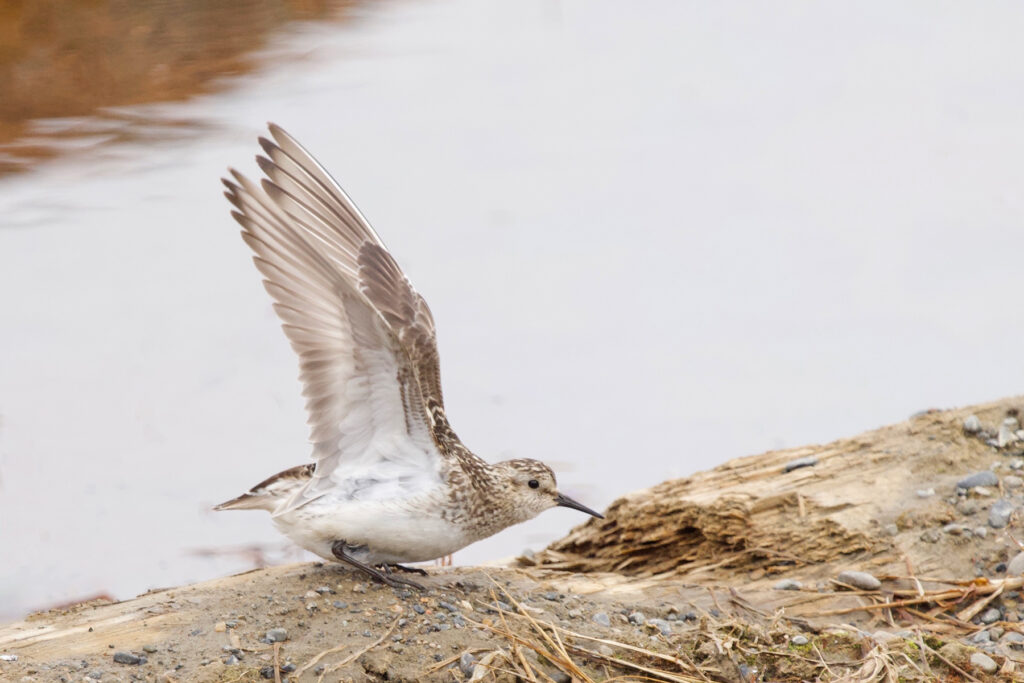
Baird’s Sandpiper is an uncommon breeding bird on the Utqiagvík tundra. Why Wild Images loves this – Joseph doesn’t mind breaking the rules with creative crops, putting the bird low in the bottom left corner (image by Joseph Priniotakis)
Previous Article
In Your Eyes – Interview with Rimma Aronov – Benin 2023Next Article
Images With Soul – Tribes of Africa